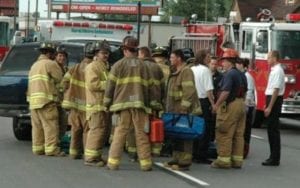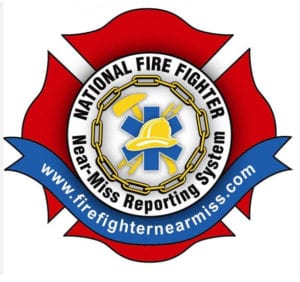 I read with great interest (and concern) an article recently published about how the San Francisco Fire Department is being fined $21,000 by state investigators for violations to safety laws that led to the deaths of two firefighters on June 2. My concern for this action is not an attempt, in any way, to diminish the tragic loss of two firefighters that, by the article’s account, could have been avoided.
I read with great interest (and concern) an article recently published about how the San Francisco Fire Department is being fined $21,000 by state investigators for violations to safety laws that led to the deaths of two firefighters on June 2. My concern for this action is not an attempt, in any way, to diminish the tragic loss of two firefighters that, by the article’s account, could have been avoided.
My concern has to do with the message punitive action sends for behaviors that have likely been occurring in their fire department for many, many years. Issues of situational awareness rarely occur for the first time at a casualty incident. On this fateful day, enough of the department’s persistent shortcomings aligned concurrently to flaw situational awareness, contribute to poor decision making and resulted in a tragedy. To levy a fine on the department is not likely to impact the needed behavior change because financial penalties do not address the root problem. Here’s what I wish they would have done…
 It is my hope (ok… call it a wish) that fire departments who suffer catastrophic outcomes would undergo a thorough facilitated debriefing to help the department’s leaders understand not only the root cause of the problem, but how to fix it. Paying out cash to a state agency isn’t going to improve anyone’s understanding about what happened and it’s surely not going to fix the root cause of the problem. In fact, I’d bet dollars to donuts the state agency that levied the fine doesn’t have a clue about root cause analysis and how to fix the problems. They’re not in the fix-the-problem business. They’re in the penalize-for-errors business. Trust me… it’s the wrong approach to improve safety.
It is my hope (ok… call it a wish) that fire departments who suffer catastrophic outcomes would undergo a thorough facilitated debriefing to help the department’s leaders understand not only the root cause of the problem, but how to fix it. Paying out cash to a state agency isn’t going to improve anyone’s understanding about what happened and it’s surely not going to fix the root cause of the problem. In fact, I’d bet dollars to donuts the state agency that levied the fine doesn’t have a clue about root cause analysis and how to fix the problems. They’re not in the fix-the-problem business. They’re in the penalize-for-errors business. Trust me… it’s the wrong approach to improve safety.
In aviation, they stopped using a punishment system and started rewarding employees for reporting their near-misses and mishaps. You did not read that wrong. Self-reporting a near-miss or a mishap through the Aviation Safety Reporting System (ASRS) results in a reward – immunity from discipline. [tweet this] That is a game changer.
A culture of safety
 The concept of getting away from discipline as a way to change behavior talked about extensively in Sydney Dekker’s book, Just Culture. (By the way… Just Culture is the book Chesley Sullenburger was reading in the days leading up to the incident where he landed his Airbus 330 in the Hudson River (with zero casualties, I might add). Ok… back to the lesson. A ‘Just’ Culture is one where employees are not fearful of the consequences of making mistakes that are the result of human error. Absent fear, lessons are shared, root causes are identified and real fixes can be put into place. [tweet this]
The concept of getting away from discipline as a way to change behavior talked about extensively in Sydney Dekker’s book, Just Culture. (By the way… Just Culture is the book Chesley Sullenburger was reading in the days leading up to the incident where he landed his Airbus 330 in the Hudson River (with zero casualties, I might add). Ok… back to the lesson. A ‘Just’ Culture is one where employees are not fearful of the consequences of making mistakes that are the result of human error. Absent fear, lessons are shared, root causes are identified and real fixes can be put into place. [tweet this]
Does a Just Culture work?
Does a Just Culture work? You be the judge. If you fly on one of the top twenty commercial airlines your chances of dying in an aviation accident is about 1:85 million. Those are damn good odds. For you Six Sigma zealots, that’s a Six Sigma safety record! If you don’t know what I’m talking about, look it up… or trust me. It mean’s they have safety figured out.
Punishment Damages Learning
An organization, or for that matter, an entire profession (like ours) cannot learn while operating in an environment of fear for consequences. It leads to hiding valuable information that might otherwise be part of the solution. Our mistakes not only need to be learned, but they need to be assimilated and commonality among them identified. The closest thing we have to a system like the ASRS is the Firefighter Near-Miss Reporting System (NMRS).
NMRS Strengths and Opportunities
 The Near-Miss Reporting System is a step in the right direction. It provides an opportunity for fire service safety lessons to be shared through a searchable database. However, the NMRS is never going to achieve what the ASRS has accomplished so long as those making the mistakes suffer consequences, regardless of how well-intended the firefighters or fire commanders were. Consequence creates fear and fear prohibits the sharing of information. [tweet this]
The Near-Miss Reporting System is a step in the right direction. It provides an opportunity for fire service safety lessons to be shared through a searchable database. However, the NMRS is never going to achieve what the ASRS has accomplished so long as those making the mistakes suffer consequences, regardless of how well-intended the firefighters or fire commanders were. Consequence creates fear and fear prohibits the sharing of information. [tweet this]
Additionally, no one is completing a thorough analysis of Near-Miss data. I’ve asked for that to be done. Hell, I’ve even offered to do it myself. Thus far, I have not been granted access to contact the near-miss reporters. Absent the opportunity to interview the participants, it is impossible to extract accurate data to determine the root cause. I understand the need to protect the identities of reporters of near-miss data. However, I’ve been told, first hand, there are lots of near-miss reporters out there who’d love to share their lessons. I am fortunate to be able to meet many of them in my classes and I frequently take the opportunity to interview them.
How Could We Improve?
How could we improve? I’m glad you asked. When you read a casualty or a near-miss report that sites flawed situational awareness as a contributing factor, you might as well use the report paper to wipe your backside. It’s meaningless. I’ve uncovered over 100(!) barriers to situational awareness (Incidentally, I address the top 50 barriers to situational awareness in my program Fifty Ways to Kill a First Responder). Simply implicating situational awareness accomplishes nothing. We have to understand the root cause of the problem to be able to fix it.
Chief Gasaway’s Advice
 This is going to perhaps be the boldest statement I’ve made since I started publishing articles on this site. But it’s something I say often in my live presentations. We MUST STOP punishing our employees/members for the consequences that result when well-intended people make errors. We need to learn from these errors, and stop judging and punishing. The person who makes an error in decision making that results in the death of a firefighter is suffering a great loss as well. Trust me. I get the opportunity to work with departments who’ve had line of duty deaths. They’re suffering.
This is going to perhaps be the boldest statement I’ve made since I started publishing articles on this site. But it’s something I say often in my live presentations. We MUST STOP punishing our employees/members for the consequences that result when well-intended people make errors. We need to learn from these errors, and stop judging and punishing. The person who makes an error in decision making that results in the death of a firefighter is suffering a great loss as well. Trust me. I get the opportunity to work with departments who’ve had line of duty deaths. They’re suffering.
The first step in the healing and learning process is to acknowledge humans are fallible creatures, especially under stress. Yes, much can be done to improve performance under stress in advance of an emergency but most departments don’t train for that. Not because they don’t want to. Rather because they don’t know how to. Training to improve performance under stress requires having a deep knowledge of how the brain and body change physically, chemically and emotionally. Firefighters and training officers don’t know this stuff. They give me that feedback after every program I deliver.
Action Items
 1. Should well-intended firefighters, company officers or commanded be punished for making bad decisions that result in a casualty event?
1. Should well-intended firefighters, company officers or commanded be punished for making bad decisions that result in a casualty event?
2. How does your department learn from mistakes?
3. Do your members blow the whistle on themselves and self-report their mistakes without fear of retribution?
_____________________________________________________________
The mission of Situational Awareness Matters is simple: Help first responders see the bad things coming… in time to change the outcome.
Safety begins with SA!
_____________________________________________________________
Share your comments on this article in the “Leave a Reply” box below. If you want to send me incident pictures, videos or have an idea you’d like me to research and write about, contact me. I really enjoy getting feedback and supportive messages from fellow first responders. It gives me the energy to work harder for you.
Thanks,

Email: Support@RichGasaway.com
Phone: 612-548-4424
Facebook Fan Page: www.facebook.com/SAMatters
Twitter: @SAMatters
LinkedIn: Rich Gasaway
YouTube: SAMattersTV
iTunes: SAMatters Radio

